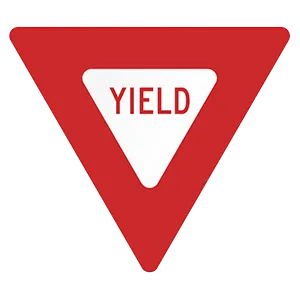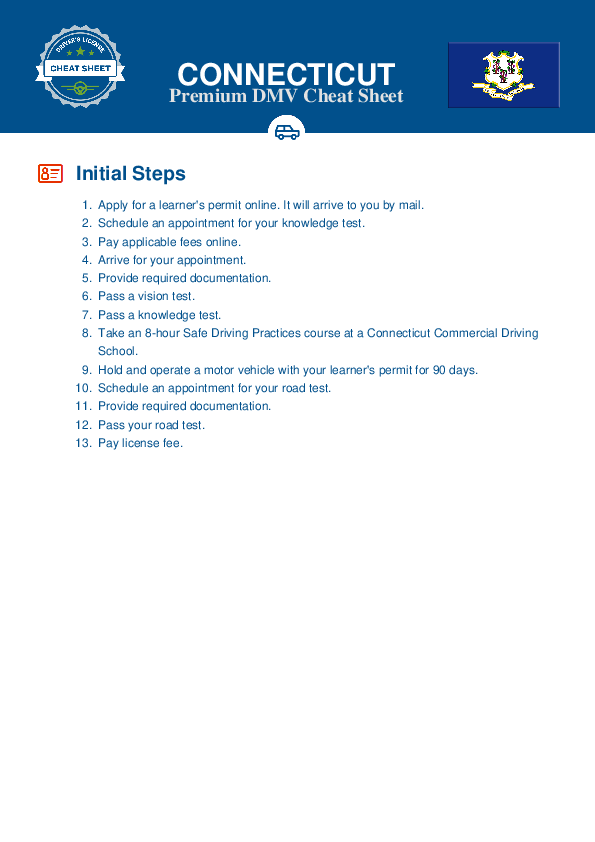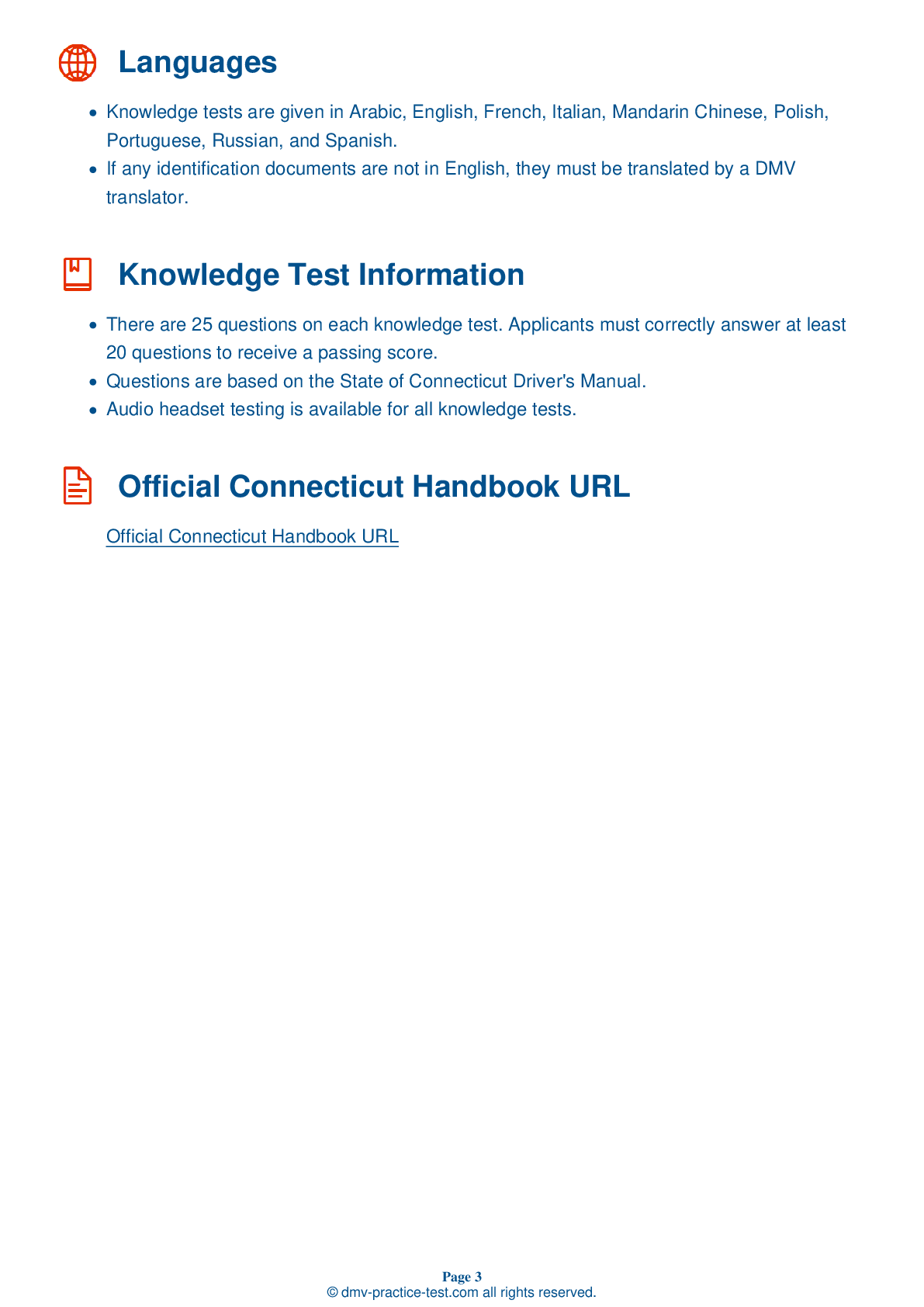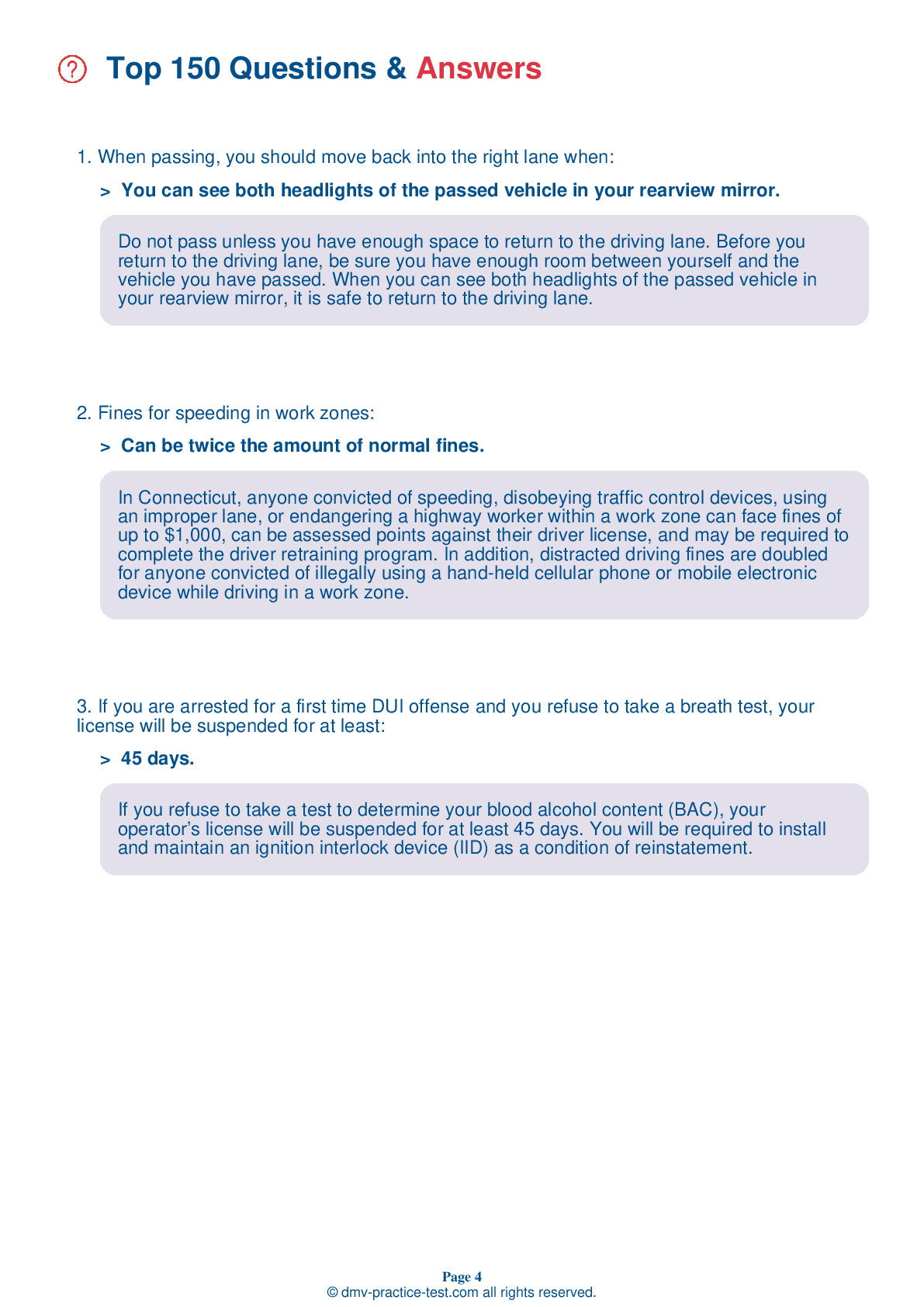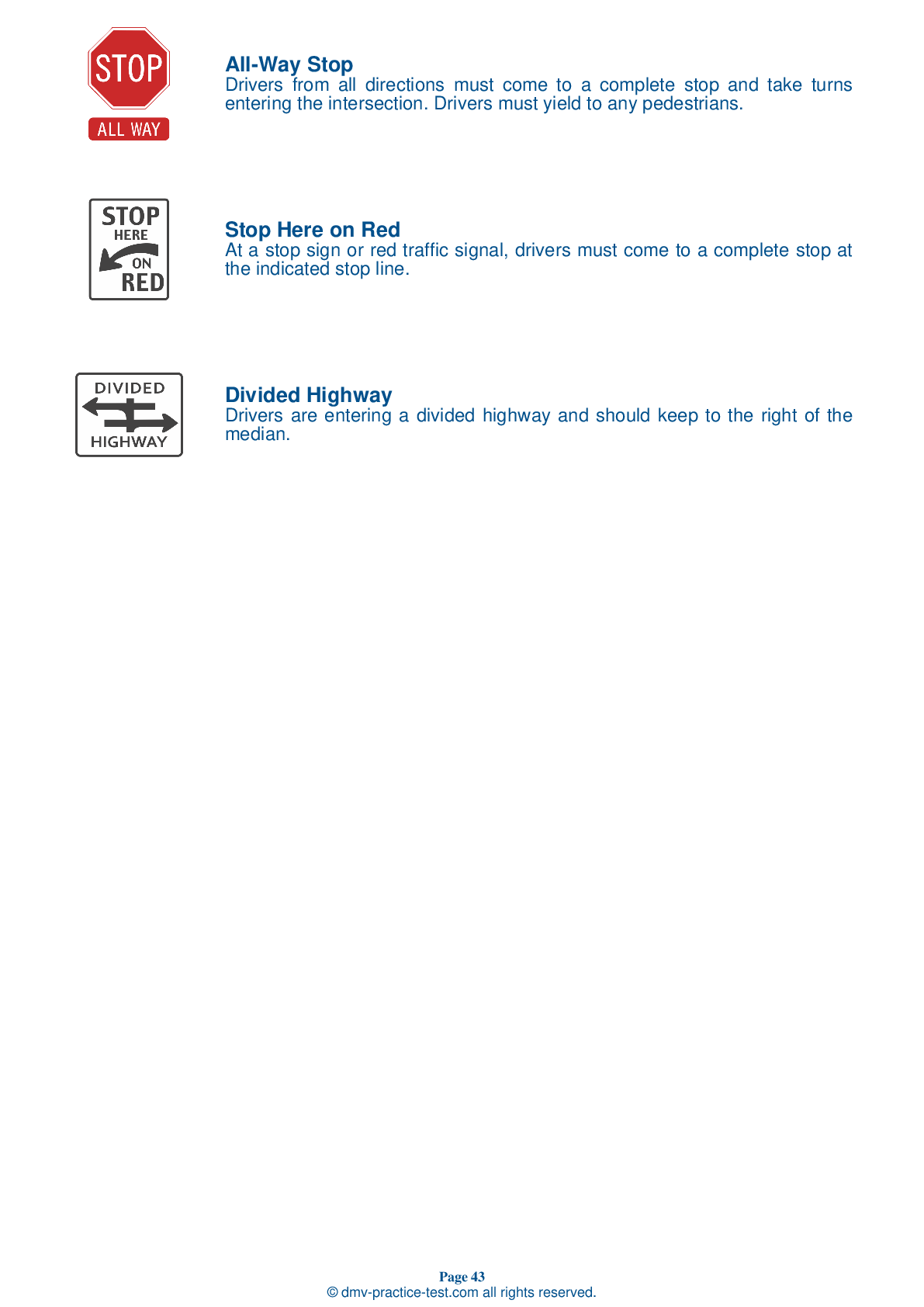FREE Connecticut DMV Practice Test #21 Page 2 of 3
This set of Connecticut DMV practise tests was just updated for January 2025. It includes questions based on the Connecticut Driver Handbook's most essential traffic signs and regulations for 2025. Use actual questions that are very similar (often identical!) to the DMV driving permit test and driver's licence exam to study for the DMV driving permit test and driver's licence exam.
Each practise test question has a hint and explanation to assist you in remembering the concepts. The written component of the official DMV test will include questions about road rules, traffic signs, and driving statutes, as well as information from the Driver Handbook.
To achieve the required passing grade, you must correctly answer 20 of the 25 questions. Take our DMV practise exam to help you prepare for your Connecticut instruction permit or driver's licence.
The DMV exam is available in several languages.
Using any form of testing help will result in an automatic fail, and the DMV may take further action against your driver's licence, so avoid it.
9 . As you approach the top of a hill, you should:
You may not know what is on the other side of a hill or just around a curve, even if you have driven the road many times. If a vehicle is stalled just out of sight on the roadway, you must be able to stop. Whenever you come to a hill or curve, adjust your speed so you can stop if necessary.
10 . To enter a gap in highway traffic:
Whenever you want to change lanes or enter traffic, you must be sure that there are no vehicles in your way in the lane you want to enter. Always check for traffic to the side of and behind your vehicle before you change lanes.
11 . If you parallel park facing downward on a hill:
When parking downhill, turn your front wheels toward the curb or edge of the road. When parking uphill on a road without a curb, turn your wheels toward the edge of the road. When parking uphill on a road with a curb, you must turn your front wheels away from the curb.
12 . This sign means:
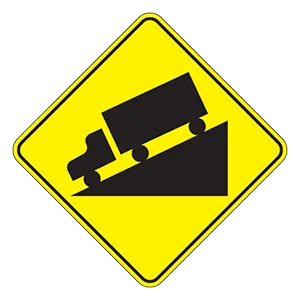
This sign warns that a steep downgrade is ahead on the road. Drivers should check their brakes.
13 . "No passing zone" signs tell drivers:
If you come across a "No passing zone" sign, it is not legal to pass in the indicated area. You are likely driving in an area with restricted visibility where it would be unsafe to pass another vehicle.
14 . This red and white sign means you should:
